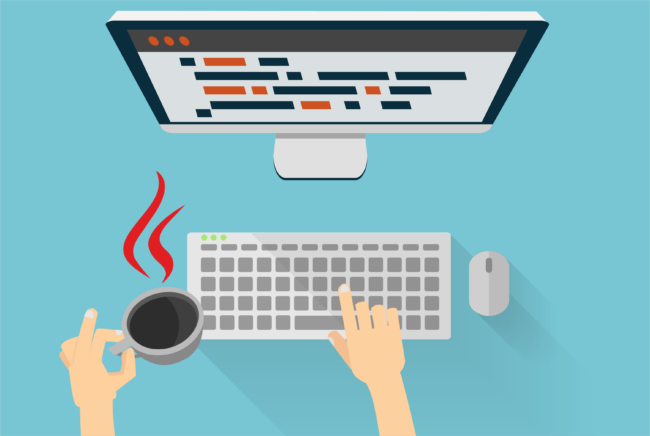Rapid prototype models help reduce budget, time, and asset waste, making them a valuable tool we often use in our client partnerships. Here you’ll gain a thorough understanding of the definition, types, benefits, and examples of rapid prototype models.
What Is a Rapid Prototyping in Software Development?
A rapid prototype model is software that is rapidly and minimally built in order to quickly demonstrate the viability or true potential of an application during the product development process. The purpose is to help business leaders make informed decisions about whether or not to move forward and provide insight into the development of the software.
As a business leader or department manager, you’re required to make decisions about how to allocate resources including talent, budget, and time. Those decisions are often made with imperfect or incomplete information, usually due to the perceived high cost and time investment required to get those answers. That is where the rapid prototyping process comes in. With a minimal investment, in a matter of weeks you can gain a greater understanding of if the project you’re considering is worth investing in.
The art of prototyping brings together the agile methodology with the consulting DNA for a customized and exciting drive towards value.
Types of Software Rapid Prototype Models
Building a rapid prototype involves creating something that communicates the vision of the project to decision makers, stakeholders, and end users who can then give users feedback and clarify unknowns. It’s a great way to drive down risk. In a custom software context, rapid prototypes present in one of two flavors.
Mockup Rapid Prototypes
The first type of rapid prototype is a mock-up of what the envisioned user interface would be like. Sometimes the mockup is visually polished and can behave like a live system, but functionality is nothing close to a production-level application.
Instead, a mockup rapid prototype is much closer to a movie set where the buildings that you see may have nothing behind them. These “veneer” prototypes help communicate the intended vision in powerful ways that a verbal or written description never could. Much like the concept of “a picture is worth 1,000 words”, a mockup rapid prototype is valuable because it can clarify intent and expectations, allowing the collection of feedback from leadership or potential end users before any significant investments have been made.
Mockup Rapid Prototype Example
We recently created a mockup rapid prototype of an executive dashboard for a client. It used a mobile form factor and showed the type and formatting of data, so the executives could clearly see the value of the application being proposed. It gave them tangible proof that the end result would meet their needs and be a good investment. This clear vision allowed them to confidently sign off on full development of the custom application.
Benefits of Mockup Rapid Prototypes
- Ability to vet if the software will meet the intended goals.
- Ability to clarify the vision for the software.
- Ability to highlight ease of use or efficiency gains.
- Ability to gather feedback from users and leadership.
- Ability to fine tune before production has even begun.
Proof-of-Concept Rapid Prototype
The second rapid prototyping model is a proof-of-concept rapid prototype. The intent of this model is to prove something is possible within existing constraints or to create confidence on the level of effort required for a pivotal part of the project.
Knowing how to do the riskiest part of a project gives stakeholders greater confidence in success because it helps to mitigate worst case scenarios. Rather than being concerned that budgets and/or timelines will be exceeded, a level of certainty about the approach and effort is achieved, allowing resource expectations to be dialed in. The proof-of-concept rapid prototype is often the opposite of the movie set veneer style mockup prototype. This is because the focus is on proving a specific functionality, so there are working parts but little to no effort is put into how the application looks. Imagine something made in a garage or skunkworks conference room.
Proof-of-Concept Rapid Prototype Example
An example of a proof-of-concept rapid prototype would be proving the critical integration point between a vendor data source via API to reformat and merge into source data without creating duplicate records. The goal of the rapid prototype would be to show that the proposed approach is feasible in order to gain approval for application development.
Benefits of Proof-of-Concept Rapid Prototypes
- Ability to clarify feasibility and level of effort required.
- Reduces project risk.
- Allows the engineering team to focus solely on a specific problem/challenge.
Ultimately, the advantage of rapid prototyping is the return on investment.
Using Software Rapid Prototypes in Your Business
A rapid prototype can help show viability or build momentum for the next big thing as well as drive down risk and lead to a green light for something powerful. Sometimes, however, the most valuable takeaway is learning at an early stage that the software you wanted to build is not worth investing in.
It’s like testing a hypothesis. With a mockup rapid prototype, you can see how users would react to the application. If they react poorly, you can abandon the idea or rethink it without having spent a significant amount of money. Similarly, a proof-of-concept rapid prototype gives you the opportunity to discover that a tricky integration really isn’t possible at the needed effort level. Once again, you can abandon the idea or rethink it without having wasted valuable time and resources developing an application that never meets its potential.
For projects with a big opportunity cost relative to other initiatives, having confidence in your decision to dive in or pull out can reduce your risk.
InfoWorks has the experience and passion to bring your custom software application idea to life through our rapid prototype model services. Our application accelerator can further speed up the timeline. Have confidence that the application you build is the application you need.





